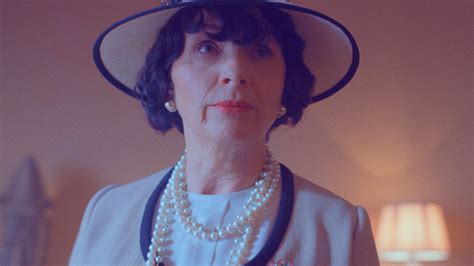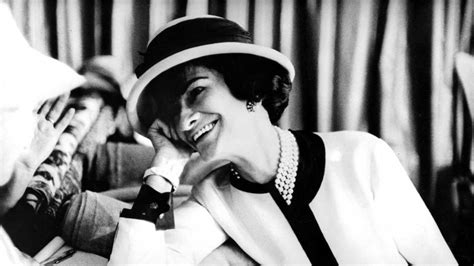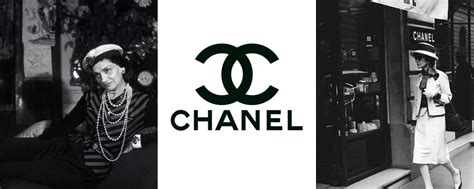coco chanel drug abuse | Did the fashion industry ever really move away from ‘Heroin Chic’? coco chanel drug abuse In a new biography Coco Chanel: An Intimate Life, author Lisa Chaney claims to have evidence that proves the designer used drugs, experimented with her sexuality and had . $10K+
0 · The Truth Behind Coco Chanel’s Nazi Ties in ‘The New Look’
1 · The Troubling Truth About Coco Chanel
2 · The Mysteries and Dark Side of Coco Chanel
3 · Did the fashion industry ever really move away from ‘Heroin Chic’?
4 · Coco Morphine #Fashion
5 · Coco Chanel’s manifesto shows a woman of style with
6 · Coco Chanel's secrets revealed
7 · Coco Chanel's secret life: Biography & trivia
8 · Coco Chanel Biography: Drugs, Bisexuality and Love With a Nazi
9 · A LIFE IN DESIGN: COCO CHANEL (1883
In 1956, the term “Artificial Intelligence” emerged from a meeting of brilliant minds, including John McCarthy and Marvin Minsky. This event solidified the belief that .
While she was never punished for her role in World War II, it is believed that Coco Chanel sided with the Nazis. Around this time, per a New Yorker piece that looked at Coco's . In the twenty-six years she lived after World War II, Coco Chanel never publicly apologized for her treacherous behavior during the Nazi Occupation of Paris.
In a new biography Coco Chanel: An Intimate Life, author Lisa Chaney claims to have evidence that proves the designer used drugs, experimented with her sexuality and had . A re-released biography, "Coco Chanel: The Legend and the Life" by Justine Picardie, which included illustrations by Karl Lagerfeld, has drawn attention to Chanel's use of .
From her earliest years, Chanel aimed to stand out: wearing men’s clothing when other women were wreathed in huge, elaborate dresses. A sea of suits, the trademark Chanel couture is on display .We don’t associate a Chanel tweed jacket with a person struggling with addiction; nor do we a successful designer, painter or CEO (Coco Chanel’s opioid addiction was finally addressed in .
Hedonism gripped Paris with the fervour of a new religion - and alcohol and drugs (particularly cocaine and morphine) were bountiful. At one event held on the day before New . Coco Chanel's life is a testament to the complexities of human nature. While she achieved unparalleled success in the fashion world, her personal battles, including her .
FRIENDS, DRUG ABUSE, AND MORE LOVE AFFAIRS. By 1935, Chanel and her kindred spirit, Misia Sert, were morphine addicts. They injected themselves on a daily basis, and Chanel .
While she was never punished for her role in World War II, it is believed that Coco Chanel sided with the Nazis. Around this time, per a New Yorker piece that looked at Coco's involvement in the war through the perspective of author Hal Vaughan, the designer was involved with Hans Günther von Dincklage, a Nazi officer. The nickname “Coco” has many alleged originations. But one of the origination theories speaks to a darker side of Chanel. The historian believes it came from her penchant for throwing “cocaine” parties. At any rate, it is thought that Chanel was addicted to morphine for much of her adult life. In the twenty-six years she lived after World War II, Coco Chanel never publicly apologized for her treacherous behavior during the Nazi Occupation of Paris. In a new biography Coco Chanel: An Intimate Life, author Lisa Chaney claims to have evidence that proves the designer used drugs, experimented with her sexuality and had illicit affairs with.
A re-released biography, "Coco Chanel: The Legend and the Life" by Justine Picardie, which included illustrations by Karl Lagerfeld, has drawn attention to Chanel's use of opiates before,.

prix tnf gucci
The Truth Behind Coco Chanel’s Nazi Ties in ‘The New Look’

From her earliest years, Chanel aimed to stand out: wearing men’s clothing when other women were wreathed in huge, elaborate dresses. A sea of suits, the trademark Chanel couture is on display .We don’t associate a Chanel tweed jacket with a person struggling with addiction; nor do we a successful designer, painter or CEO (Coco Chanel’s opioid addiction was finally addressed in An Intimate Life by Lisa Chaney in 2011).
Hedonism gripped Paris with the fervour of a new religion - and alcohol and drugs (particularly cocaine and morphine) were bountiful. At one event held on the day before New Year's Eve 1920, at Chanel's shop on Rue Cambon, the party started out civilly enough with a buffet in the fitting rooms, only to degenerate into debauchery. Coco Chanel's life is a testament to the complexities of human nature. While she achieved unparalleled success in the fashion world, her personal battles, including her addiction to morphine, reveal the vulnerability that exists behind even the most glamorous life.FRIENDS, DRUG ABUSE, AND MORE LOVE AFFAIRS. By 1935, Chanel and her kindred spirit, Misia Sert, were morphine addicts. They injected themselves on a daily basis, and Chanel continued to do so until the day she died. According to those surrounding her, she threw fabulous cocaine parties.
While she was never punished for her role in World War II, it is believed that Coco Chanel sided with the Nazis. Around this time, per a New Yorker piece that looked at Coco's involvement in the war through the perspective of author Hal Vaughan, the designer was involved with Hans Günther von Dincklage, a Nazi officer.
The nickname “Coco” has many alleged originations. But one of the origination theories speaks to a darker side of Chanel. The historian believes it came from her penchant for throwing “cocaine” parties. At any rate, it is thought that Chanel was addicted to morphine for much of her adult life. In the twenty-six years she lived after World War II, Coco Chanel never publicly apologized for her treacherous behavior during the Nazi Occupation of Paris. In a new biography Coco Chanel: An Intimate Life, author Lisa Chaney claims to have evidence that proves the designer used drugs, experimented with her sexuality and had illicit affairs with.
A re-released biography, "Coco Chanel: The Legend and the Life" by Justine Picardie, which included illustrations by Karl Lagerfeld, has drawn attention to Chanel's use of opiates before,. From her earliest years, Chanel aimed to stand out: wearing men’s clothing when other women were wreathed in huge, elaborate dresses. A sea of suits, the trademark Chanel couture is on display .
We don’t associate a Chanel tweed jacket with a person struggling with addiction; nor do we a successful designer, painter or CEO (Coco Chanel’s opioid addiction was finally addressed in An Intimate Life by Lisa Chaney in 2011).
Hedonism gripped Paris with the fervour of a new religion - and alcohol and drugs (particularly cocaine and morphine) were bountiful. At one event held on the day before New Year's Eve 1920, at Chanel's shop on Rue Cambon, the party started out civilly enough with a buffet in the fitting rooms, only to degenerate into debauchery. Coco Chanel's life is a testament to the complexities of human nature. While she achieved unparalleled success in the fashion world, her personal battles, including her addiction to morphine, reveal the vulnerability that exists behind even the most glamorous life.
The Troubling Truth About Coco Chanel
pochon gucci

How can I change my email address? Please write to us from the email .
coco chanel drug abuse|Did the fashion industry ever really move away from ‘Heroin Chic’?


























